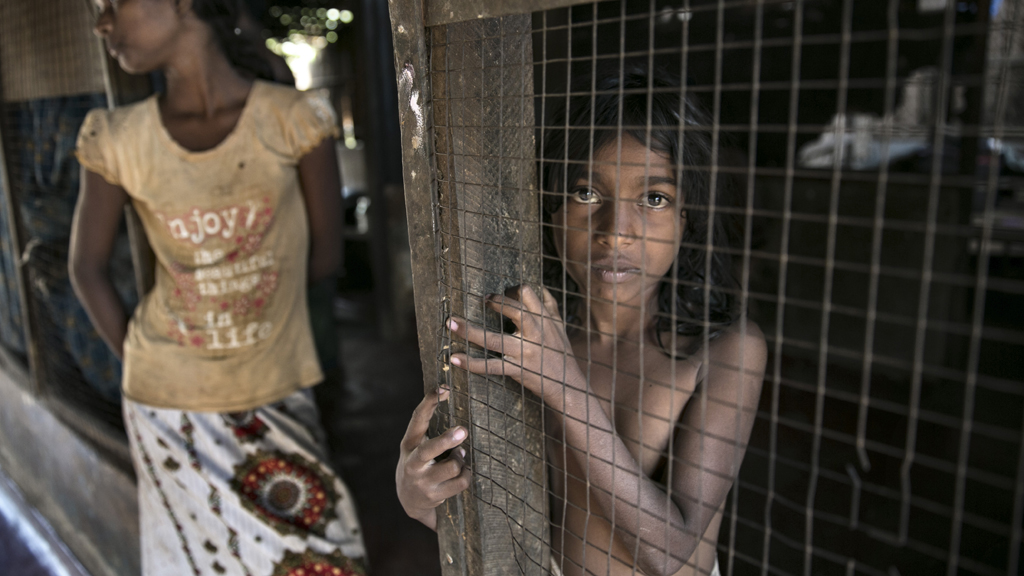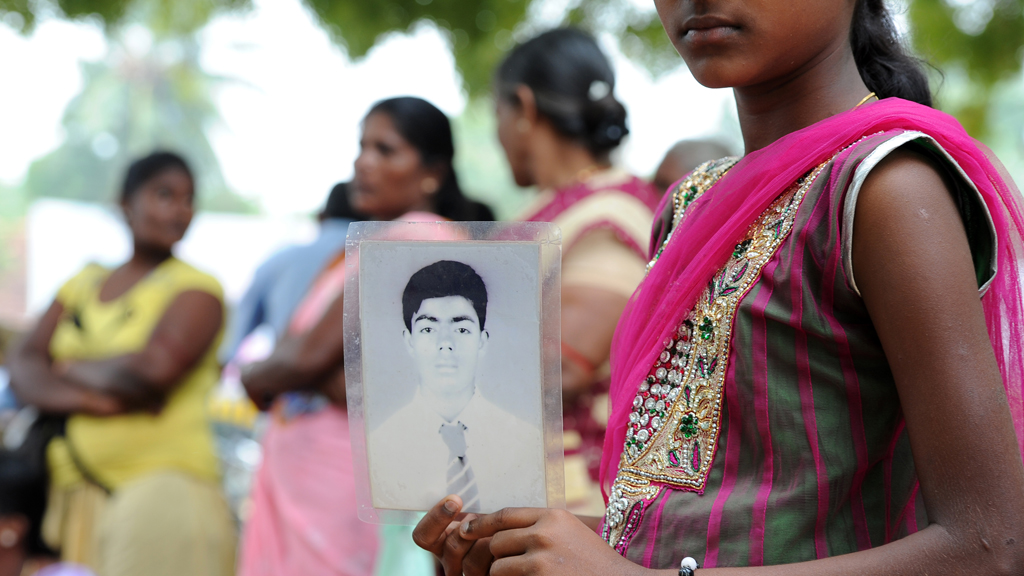Sri Lanka: grim up north for the Tamil community
President Mahinda Rajapaksa has made much of the development of Sri Lanka’s north following the carnage of war – but has life really improved for the Tamil community living there?

In a recent interview the president, who has been accused of war crimes, told al-Jazeera the country has “marched forward rapidly” since the defeat of the LTTE terrorist group in 2009.
“During the past four years, after defeating northern terrorism, Sri Lanka has marched forward rapidly in the fields of economic and infrastructural development, human rights and tourism, foreign investment inflow, exports and many other areas.”
He said $3bn had been spent on rebuilding infrastructure in the north of the country, the traditional home of Sri Lanka’s Tamily community, and prisoners of war had been released.
‘Very scared and vulnerable’
On Friday David Cameron, alongside journalists including Channel 4 News’s Jon Snow, visited Jaffna in the north and spoke to Tamil leaders, visited a Tamil newspaper, and visited a camp for internally displaced people.
He was met by hundreds of people who took to the streets calling for help to find their missing loved ones. But it is not just the “disappeared” that are a problem for the Tamil residents of Sri Lanka’s former war zone.
Charities have raised concerns about human rights in the region, and the vulnerability of various groups – from freed former members of the LTTE, known as the Tamil Tigers, to women.
Read the latest from the Channel 4 News team in Sri Lanka.
Alan Keenan, Sri Lanka project director at the International Crisis Group, told Channel 4 News that the situation in the area has improved “in some ways” through the major investment in infrastructure in the Vanni (Sri Lanka’s northern province).
However, he said: “There are a lot of economic and humanitarian problems still there.
“The argument that many make, that I would agree with, is that the government has made too much of large infrastructure and development projects, which it is able to show off to the international community, and not enough of the situation on the ground.
“A lot of people still feel very scared and vulnerable.”
Who are the ‘vulnerable’ of the north?
Tamils
One group under threat is the Tamil population, which makes up the vast majority of people living in northern Sri Lanka.
There are concerns from some members of the Tamil community that the government is undertaking a practice of “Sinhalisation” of the area.
Many Sinhalese fled the north due to the atrocities being carried out by the Tamil Tigers during the civil war, and some have now returned. But, as Mr Keenan says, there are concerns about the number of Sinhalese coming into the area.
“A lot of Tamils think, let alone that the government is overly concerned with the rights of the Sinhalese, but that it is also bringing in new Sinhalese. The numbers and evidence are not there, so we can’t judge the scale, we don’t know if we are taking a few thousands, or a few tens of thousands.
The Sri Lankan military, despite their heroic and popular reputation among the majority community in southern Sri Lanka, is generally feared in northern Sri Lanka. Minority Rights Group
“What is worrying is statements from senior government officials, including the president’s brother Gotabaya, who said it was ‘unnatural’ for the north to be majority Tamil.”
Estimates have suggested that there are 150,000 Sinhalese soldiers in the Vanni. At one soldier for approximately every five civilians, this is considered to be one of the highest soldiers-to-civilians ratios in the world.
And, Mr Keenan says, this means the infrastructure is in place for “Sinhalisation”, as families of the soldiers are moved to the north – which could lead to a decline in Tamil culture.
Recent provincial elections, a step towards creating a semi-autonomous region in the north, sent a signal from the Tamil community to Colombo.
(There are) continued concerns over the vulnerability of women and girls to sexual harassment and abuse. William Hague
Despite “systematic harassment of TNA (Tamil National Alliance) candidates”, a report published this week by the International Crisis Group said, the TNA won 78 per cent of the vote and 30 out of 38 council seats.
However, the report warns, the Sri Lankan government’s hostility to devolution means that achieving any meaningful democratic freedom is still distant.
Women
The legacy of the Sri Lankan civil war for the north is that many husbands and fathers were killed, meaning many Tamil women are left to head household on their own.
It has been estimated that there are 89,000 war widows in Sri Lanka’s north and east alone.
A recent Minority Rights Group report found that the huge military presence in the area has made these women vulnerable to sexual harassment and violence.

“The Sri Lankan military, despite their heroic and popular reputation among the majority community in southern Sri Lanka, is generally feared in northern Sri Lanka,” the report says.
“In the former LTTE-controlled areas in particular, people still see the Sri Lankan military forces as the enemy.
“This fear is vindicated by credible allegations of human rights violations, including rape and the sexual and emotional abuse of women.”
Mr Keenan adds that Tamil women are vulnerable to sexual violence, but are also coerced into sexual relationships with Sinhalese soldiers, sometimes for the promise of marriage and sometimes for money.
At the Commonwealth heads of government meeting in Colombo, British Foreign Secretary William Hague raised the “continued concerns over the vulnerability of women and girls to sexual harassment and abuse, particularly the 90,000 Sri Lankan war widows living in areas with a large military presence”.
He said: “I will be urging the Sri Lankan government to investigate these cases as they deserve. That means carrying out credible and independent investigations, but it also means providing greater support to victims and passing strong witness protection legislation, so that justice is not undermined by social stigma and intimidation.”
The displaced
In total 470,000 were displaced by the Sri Lankan civil war. This includes 75,000 Muslims thrown out of the north by the LTTE, and those who have had their homes and land seized by the military.

An estimate in January 2013 put the number of displaced at 93,000, with around 9,800 living in refugee camps.
Fisherman
Tamil fisherman have been particularly hard hit by the presence of the military in the north, with restrictions placed on their ability to work.
“There are allegations that Sinhala fisherman are being brought in and are being allowed to fish alongside the military in a way that fisherman who have lived there for years are not,” Mr Keenan says.
Freed prisoners
Members of the LTTE who surrendered were “rehabilitated” by the government and released – with President Rajapaksa putting the number of released at 11,000.
However, Mr Keenan said: “People steer clear of them because there are fears they have been pressured into becoming informers. This makes it difficult for them to find jobs.”
The Sri Lankan government has denied all allegations of human rights abuses and war crimes made against it.